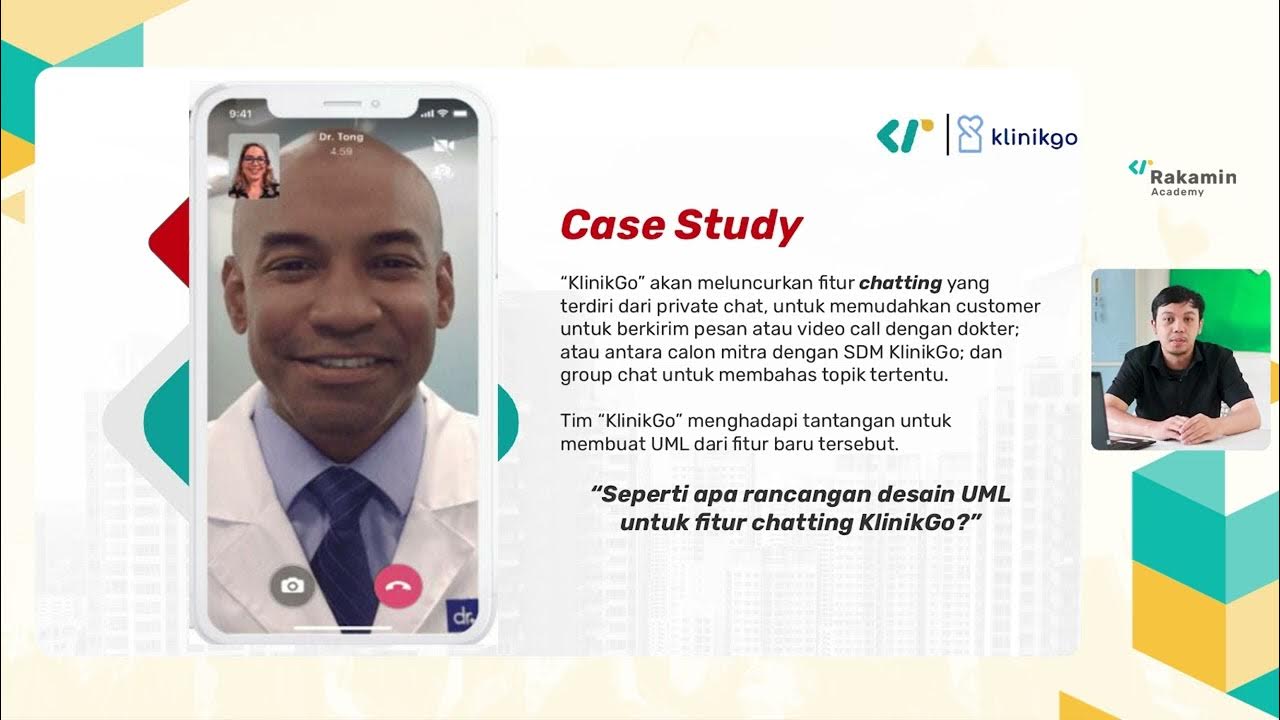Lecture 12: Agile Model
Summary
TLDRThe video script delves into various software development lifecycle models, highlighting the Unified Process and its application in object-oriented software development. It emphasizes incremental and evolutionary models, detailing the phases of development, iterations, and the importance of risk management and customer feedback in the Spiral Model. The script also discusses Agile development, its principles, and the benefits of face-to-face communication, iterative progress, and minimal documentation. It contrasts Agile with traditional models like the Waterfall and RAD, and touches on the importance of managing scope and customer expectations effectively.
Takeaways
- 📈 The lecture discusses two significant lifecycle models: the Evolutionary Model and the Incremental Model, which are the basis for many successful models like RAD and Unified Process.
- 🛠 The Unified Process is widely used for object-oriented software development and is considered an incremental model due to its phased approach with iterations for addressing various requirements.
- 🔄 The development in the Unified Process occurs in four phases: Inception, Elaboration, Construction, and Transition, each containing multiple iterations.
- 🔍 During the Inception phase, the project scope, risk management plan, staffing project plan, and overall architecture are defined, setting the foundation for the project.
- 📈 The Spiral Model, introduced by Boehm in 1988, combines features of both incremental and evolutionary development, focusing on risk handling and iterative development with customer feedback.
- 🔧 The Spiral Model emphasizes risk handling by identifying and addressing major risks at each phase through prototypes, which is crucial for software project success.
- 🚀 Agile development models have emerged as an alternative to traditional models, emphasizing rapid development, minimal documentation, and flexibility to accommodate changes based on customer feedback.
- 💬 Agile methodologies prioritize face-to-face communication and customer collaboration, allowing for quicker response to changes and efficient problem-solving.
- 🔄 The Agile Manifesto, established in 2000, highlights the importance of individuals and interactions, working code, customer collaboration, and responding to change over comprehensive documentation and rigid processes.
- 📝 While Agile development encourages minimal documentation, it still requires creating concise, accurate, and consistent documents that are valuable and easily adaptable.
- 🔍 Agile development involves iterative and incremental progress, with customer feedback incorporated at regular intervals to refine the software and ensure it meets customer needs.
Q & A
What are the two main lifecycle models discussed in the previous lecture?
-The two main lifecycle models discussed are the Evolutionary Model and the Incremental Model.
Why is the Unified Process widely used for object-oriented software development?
-The Unified Process is widely used for object-oriented software development because it is designed to be flexible and adaptable to various project needs, incorporating iterative and incremental development.
What are the four main phases of the Unified Process?
-The four main phases of the Unified Process are Inception, Elaboration, Construction, and Transition.
How does the Incremental Model differ from the Evolutionary Model in terms of deployment?
-In the Incremental Model, each increment is typically deployed at the customer's site, whereas the Evolutionary Model focuses on the continuous evolution of features without specific deployment for each increment.
What is the main focus of the Inception phase in the Unified Process?
-The main focus of the Inception phase is to define the project scope, perform risk analysis, cost-benefit analysis, and establish the overall architecture of the project.
What is the Spiral Model and who introduced it?
-The Spiral Model is an iterative development model that incorporates elements of both incremental and evolutionary development. It was introduced by Barry Boehm in 1988.
How does the Spiral Model address risk management?
-The Spiral Model addresses risk management by identifying and addressing the main risks at each phase through prototyping and iterative development, ensuring that potential issues are dealt with in a systematic manner.
What are the four quadrants of the Spiral Model?
-The four quadrants of the Spiral Model are: 1) Objectives, Alternatives, and Constraints; 2) Risk Assessment and Reduction; 3) Developer/Customer Design and Prototyping; and 4) Plan Next Iteration and Review.
How does the Agile Development Model differ from traditional models in terms of documentation?
-The Agile Development Model emphasizes producing minimal documentation that is just sufficient for the project's needs, focusing instead on working code and customer collaboration.
What are some of the key principles of the Agile Manifesto?
-The Agile Manifesto prioritizes individuals and interactions over processes and tools, working software over comprehensive documentation, customer collaboration over contract negotiation, and responding to change over following a plan.
How does the Agile Model handle the evolution of requirements?
-The Agile Model handles the evolution of requirements by embracing change, allowing for continuous refinement and adaptation of the project scope based on customer feedback and market conditions.
What is the significance of face-to-face communication in the Agile Model?
-Face-to-face communication is significant in the Agile Model as it is considered the most efficient and effective method for conveying information and making decisions within the development team.
Outlines

This section is available to paid users only. Please upgrade to access this part.
Upgrade NowMindmap

This section is available to paid users only. Please upgrade to access this part.
Upgrade NowKeywords

This section is available to paid users only. Please upgrade to access this part.
Upgrade NowHighlights

This section is available to paid users only. Please upgrade to access this part.
Upgrade NowTranscripts

This section is available to paid users only. Please upgrade to access this part.
Upgrade NowBrowse More Related Video

Lecture 11: Evolutionary Model

Software Process Model Introduction - Georgia Tech - Software Development Process

1-3 What is Software Engineering

Project Based Internship Klinikgo Health System Analyst - Company Coaching Video 1

Lecture 07: Life Cycle Model (Contd.)

Systems Analysis and Design - Software Development Life Cycle (Part 11)
5.0 / 5 (0 votes)